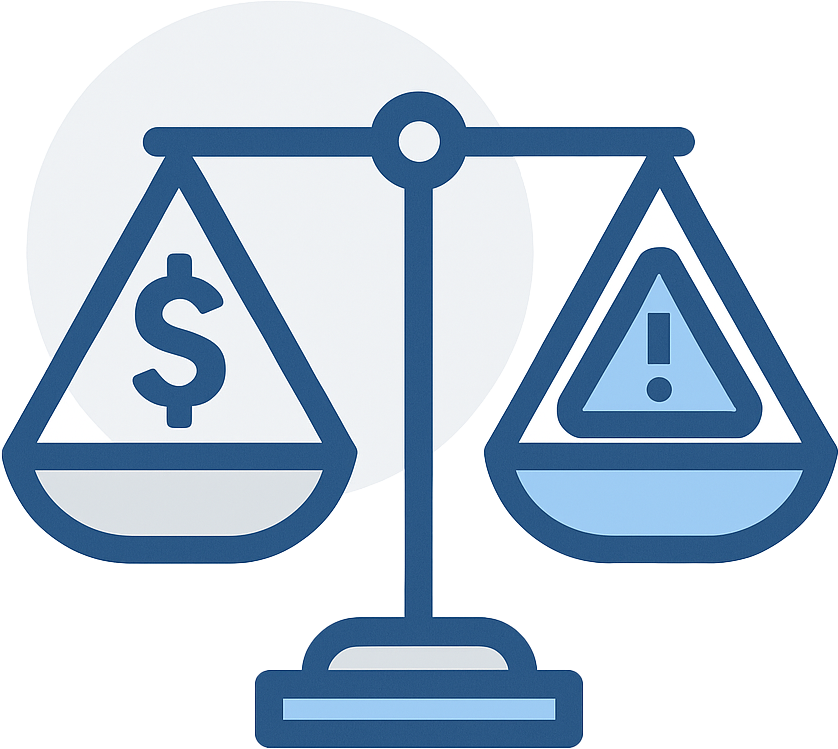No, Tier II and TRI Reporting are not the same thing. Here’s what they actually mean (and how to know if you need to do one, or both).
If you’ve ever caught yourself wondering, “Wait... is Tier II the same as TRI reporting?” you’re in good company. We hear that question constantly from business owners, plant managers, and environmental coordinators who just want to do the right thing and stay compliant.
Both reports fall under the Emergency Planning and Community Right-to-Know Act (EPCRA), a federal law designed to protect communities and emergency responders by requiring transparency about chemicals used or stored at facilities.
But while Tier II and TRI might sound similar, they serve very different purposes. Filing one does not cover you for the other. So, let’s break this down in plain English - no jargon, no guesswork, just straight answers from the folks who deal with this stuff every day.
And if you want to skip straight to clarity, reach out here and we’ll tell you exactly which reports apply to your facility.
Table of Contents
Let’s Get This Straight: Tier II and TRI Are NOT the Same Thing
Here’s the truth: Tier II and TRI are two completely separate reporting requirements under the same law. They don’t overlap, they don’t cancel each other out, and doing one doesn’t get you credit for the other. Think of it like this:
- Tier II Reporting tells your local emergency responders what hazardous materials you have on-site.
- TRI Reporting tells the government what toxic chemicals you used or released over the course of the year.
They both fall under EPCRA (more on that in a second), but they answer two totally different questions:
- Tier II asks: “What do you have here that could cause a problem if there’s an accident?”
- TRI asks: “What did you do with those chemicals, and where did they go?”
And to put it as simply as possible:
- Tier II is about the materials you're storing.
- TRI is about how you release the materials you're using.
That’s it. You might need to do neither, you might need to do one, you might need to do both. They're two different stories, two different purposes, two different reports.

What is EPCRA, and How do Tier II and TRI Reporting Fall Into It?
The Emergency Planning and Community Right-to-Know Act (EPCRA) was passed in 1986 after a massive chemical disaster in Bhopal, India. Thousands of people were killed because no one (not even first responders) knew what was stored on-site.
Congress decided that should never happen here in the United States, and passed EPCRA into law. EPCRA’s job is to make sure that communities, fire departments, and government agencies have the information they need to plan for and respond to chemical emergencies.
And Tier II and TRI are two of the main reporting systems used to make that happen.
Understanding Tier II Reporting
Tier II Reporting is basically a hazardous chemical inventory for your facility.
If you store certain chemicals above a set amount (called a threshold), you have to file a Tier II report every year by March 1. That report goes to:
- Your state (State Emergency Response Commission, or SERC)
- Your county/local emergency planning committee (LEPC)
- Your local fire department
These reports help emergency personnel know what’s in your building before they ever set foot on your property.
Typical Thresholds:
- 10,000 pounds for most hazardous chemicals (like gasoline, diesel, paint, or antifreeze)
- 500 pounds or the Threshold Planning Quantity (TPQ) (whichever is lower) for Extremely Hazardous Substances (EHSs) such as ammonia, chlorine, or sulfuric acid
Example 1:
You have a warehouse that stores 40 drums of lubricant oil (about 50 gallons each). The oil weighs around 7 pounds per gallon, so that’s 14,000 pounds total - and that's above the 10,000-pound threshold.
✅ You must file Tier II since you exceed the storage threshold.
Example 2:
You store 400 pounds of anhydrous ammonia (an EHS). The reporting threshold for ammonia is 500 pounds... but since your local TPQ might be lower, you still might have to report.
❓ You may still need to file Tier II depending on the local TPQ.
Understanding TRI Reporting
TRI Reporting stands for Toxic Release Inventory, and it’s focused on what you do with the chemicals you use. Instead of tracking storage, TRI looks at chemical activity: what you manufacture, process, or otherwise use during your operations - and where those materials end up through releases to the air, water, or land.
It’s required under EPCRA Section 313, and it’s filed annually by July 1 to both the EPA and your state environmental agency.
Typical Thresholds:
- 25,000 pounds per year for chemicals that are manufactured or processed
- 10,000 pounds per year for chemicals that are otherwise used (like cleaning agents, solvents, or coatings)
- Certain chemicals have much smaller thresholds depending on toxicity
In addition to those thresholds, your business must also:
- Fall under a covered NAICS code
- Have 10 or more full-time employees
Example 1:
You manufacture metal parts and use trichloroethylene (TCE) as a degreaser. Over the course of the year, you use 12,000 pounds of TCE. You have 25 employees, and your NAICS code is subject to TRI regulations.
✅ You meet the 10,000-pound “otherwise used” threshold, employee qualifier, and NAICS qualifier, so you must file a TRI report.
Example 2:
You manage a small office building that keeps limited janitorial supplies (a few gallons of cleaning products, paint, and lubricants) all well below reporting thresholds.
❌ You do not need to file Tier II or TRI, because the quantities are minimal and none exceed hazardous chemical thresholds.
“In What World Would I Be Storing Things and Not Using Them?” It's More Common Than You'd Think!
We hear this one all the time, and honestly, it’s a fair question - “Why would I have a bunch of chemicals sitting around if I’m not using them?” "In what world would Tier II apply, but NOT TRI??" But here’s the thing: it happens more often than you’d think, and for totally normal reasons.
- Maybe you’ve got a backup generator with a large diesel tank that only kicks on during power outages. You might go all year without losing power and burning any of that fuel, but from an emergency planning standpoint, it still matters. If there’s a fire, spill, or explosion, first responders need to know that fuel is on-site. That’s exactly what Tier II reporting is designed for.
- Or maybe you run a maintenance shop that keeps a few drums of motor oil, coolant, and cleaning solvents in a corner. You might only use them occasionally in small amounts - not enough to trigger TRI reporting. Tier II doesn’t care how often you touch them, though, it cares that they’re physically present and could create a risk in an emergency.
- We also see it all the time in warehouses and distribution centers. You might not even own the materials, you’re just storing them for someone else. But if they’re on your property and something goes wrong, you're the one the fire department is headed to. That’s why those stored materials count toward your Tier II thresholds.
Now compare that to a manufacturing plant that’s actively using those same materials - running solvents through parts washers, blending chemicals, coating products, and releasing byproducts into the air, water, or land. That’s not Tier II anymore, that’s TRI reporting, which tracks what happens to those chemicals once they’re part of your operations and potentially impacting the environment.
So yes, it’s entirely possible to be storing but not using. Tier II is about what’s there and how it could affect emergency response. TRI is about what’s done with it and how it affects the environment. Two different risks, two different reports, both critical for compliance.
Tier II vs. TRI: Quick Comparison Table
| Category |
Tier II Reporting |
TRI Reporting |
| Law |
EPCRA Sections 311 & 312 |
EPCRA Section 313 |
| Focus |
What hazardous chemicals you have on-site |
What toxic chemicals you manufacture, process, use, and release |
| Typical Thresholds |
10,000 lbs (most chemicals) or 500 lbs for Extremely Hazardous Substances |
25,000 lbs (manufactured/processed) or 10,000 lbs (otherwise used) |
| Due Date |
March 1 each year |
July 1 each year |
| Submitted To |
State & local agencies, fire department |
EPA & state environmental agency |
| Purpose |
Emergency planning & community right-to-know |
Pollution tracking & national emissions data |
| Who Files |
Anyone storing hazardous materials above thresholds |
Certain industries manufacturing or using TRI-listed chemicals |

Do You Need to File Both Tier II and TRI Reports?
Maybe. If your facility both stores hazardous chemicals and uses or processes them, you may need to file both Tier II and TRI.
For example:
- A metal fabrication shop that keeps large quantities of solvents (Tier II) and uses those solvents in operations (TRI) will need both.
- A bulk fuel storage facility that only stores diesel (no processing or usage beyond storage) will likely only need Tier II.
- A chemical manufacturer or paint producer will almost always trigger both.
Need Help Figuring Out Tier II and TRI Reporting?
Tier II and TRI aren’t interchangeable, they’re two separate pieces of the same big picture. If you handle or store hazardous materials at all, don’t wait until March or July to start thinking about it. Let’s make sure you’re covered today.
At RMA, we’ve spent decades helping facilities navigate Tier II and TRI reporting. We know what triggers each requirement, what data you’ll need, and how to make sure your reports are accurate, complete, and on time.
We can:
- Review your chemical lists and operations
- Determine exactly which reports apply to you
- Handle every step of filing
- Keep you compliant year after year
If you’re not 100% sure where you stand, reach out today. We’ll help you figure it out - and take the stress out of compliance. Contact RMA here to get started!












